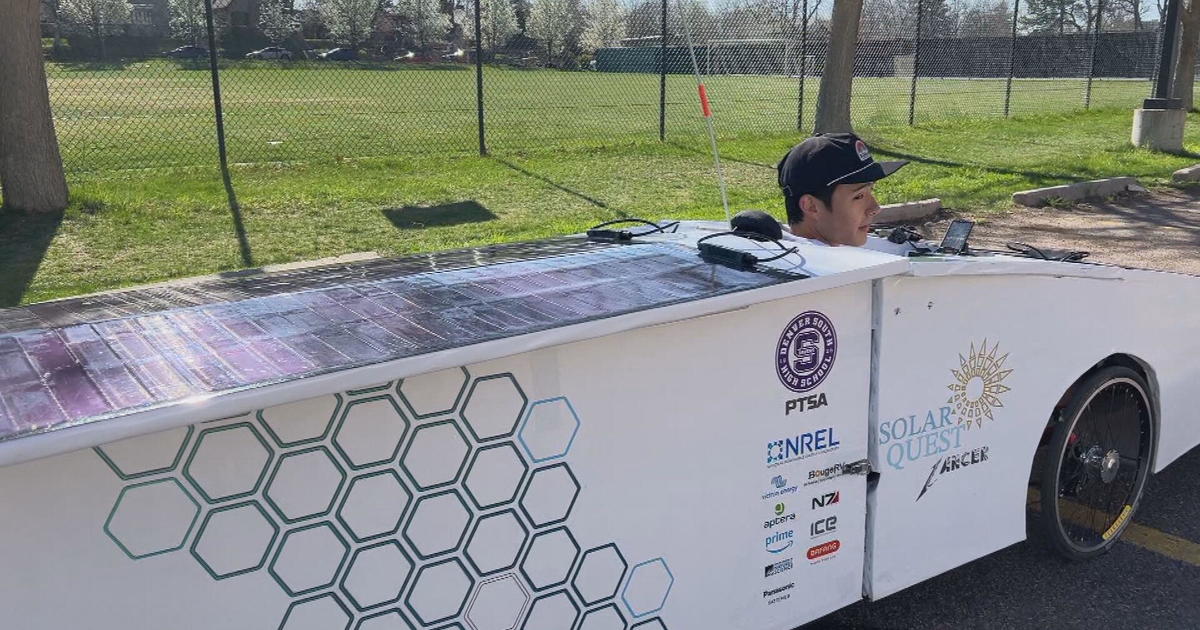Harnessing Landfill Gas In Erie For Electricity
ERIE, Colo. (AP) - Capturing 1,200 cubic feet of methane per minute to generate 4.8 megawatts of electricity -- enough to power half of Erie's 6,700 households for decades into the future -- is a pretty tall order.
But with two landfills on the east side of Erie practically bursting with the combustible gas -- methane is a naturally occurring byproduct of solid waste decomposition -- numbers on paper will soon become reality for the town of 19,000.
Brian Karp, district manager for the Denver Regional and Front Range landfills, said his company's gas-to-energy project, which is set to go online next month, may make people think differently about what is generally considered an undesirable element in any community.
"There is a stigma associated with a landfill," said Karp, with Waste Connections Inc. "Now we are able to put a positive spin on it. Instead of being a greenhouse gas emitter, it is something that is good for the environment and for the residents."
Erie spokesman Fred Diehl said capturing the methane at both landfills is the equivalent of offsetting 30,000 metric tons of carbon dioxide that might otherwise be released into the atmosphere.
"We look for opportunities to bolster our sustainability credentials," he said. "This will rise to the top of all of our efforts."
Waste Connections, which owns both landfills in Erie, currently burns off the methane after it comes out of the ground.
It has teamed up with Landfill Energy Services to build the gas-to-energy facility.
Neither company would disclose the project's cost.
Scott Gauthier, Landfill Energy Services' project manager, said his company reached a 20-year agreement with Brighton-based electric cooperative United Power to sell the electricity the project produces to the utility, which he said will be equivalent to powering about 3,300 homes.
And compared to other forms of renewable energy -- like hydro, wind and solar -- he said methane capture is more reliable and consistent.
"The nice thing about our facility, as opposed to wind, it's a constant power source that's running all the time," Gauthier said.
Karp pointed out features of the project on a recent morning, as workers welded and laid pipe that will allow methane from the Denver Regional Landfill to travel to two massive Caterpillar 3516 engines that are capable of converting the gas into electric power. The power will then be fed into a transformer and into the electric grid.
He said the Denver Regional Landfill, which has operated for 30 years and is scheduled to be capped and closed in September, is at its methane production prime right now. Ninety-one vertical and horizontal extraction wells have been drilled into the 160-acre dump to collect the gas and seven more are planned.
Earlier this month, crews started drilling 20 wells into the Front Range Landfill across the street from Denver Regional to capture the gas that is being generated there. Front Range will be operational for decades to come.
According to data from the U.S. Environmental Protection Agency, there are 558 landfills nationwide that capture methane to produce heat or power, but Colorado has only one -- the Denver Arapahoe Disposal Site in Aurora.
That's because Colorado's dry climate isn't conducive to rapid methane production at landfills, said Stacey Simms, associate director of programs at the Colorado Governor's Energy Office.
Even so, the EPA lists 12 landfills in the state that are candidates for some kind of gas-to-energy system.
And that's a dozen opportunities, Simms said, to get residents to appreciate their neighborhood dump in ways they may never have thought about while at the same time doing something good for the environment.
"When a community wants to promote this process that destroys methane, it allows the landfill to be a better neighbor," she said.
- By John Aguilar, Daily Camera
(Copyright 2011 by The Associated Press. All Rights Reserved.)



